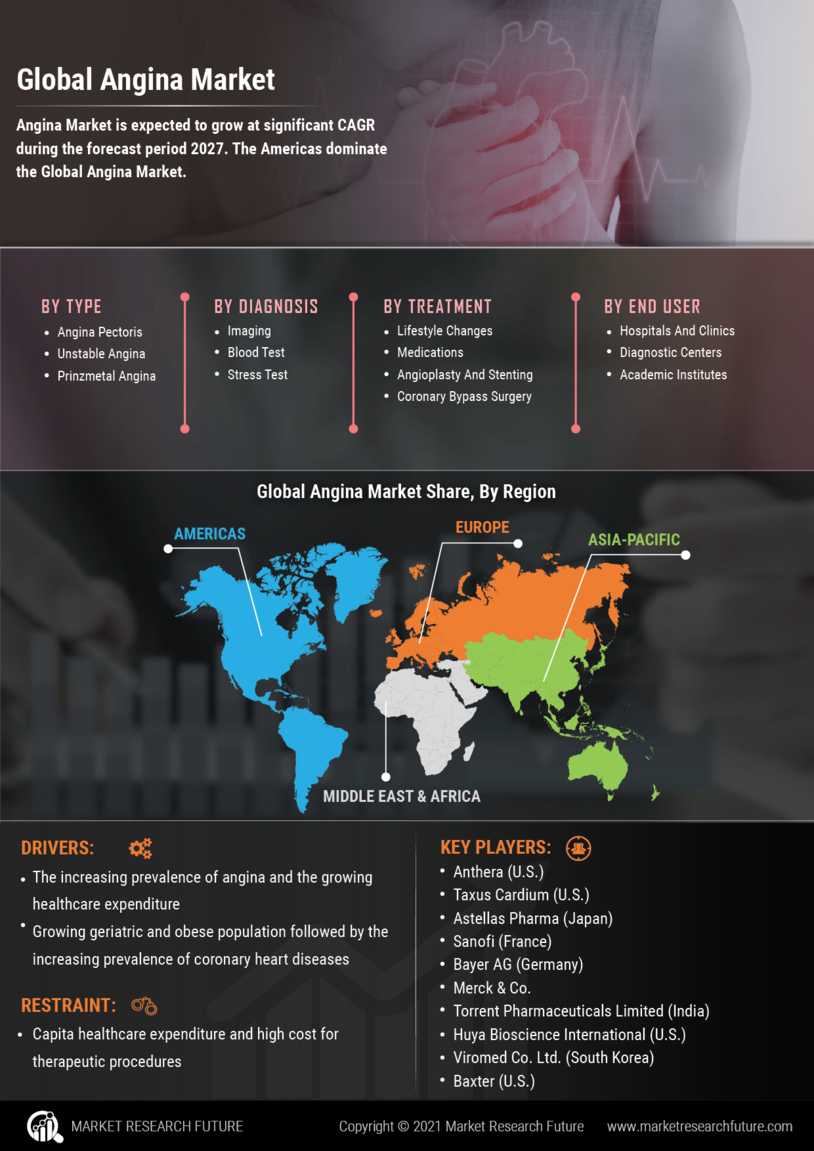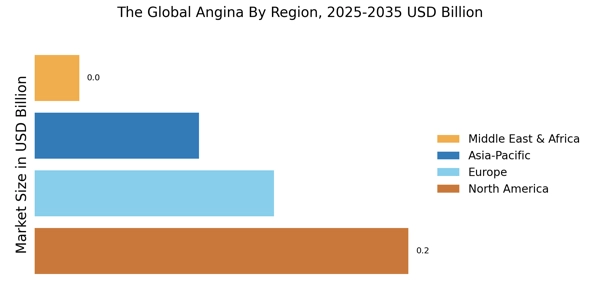Advancements in Medical Technology
Technological innovations in medical devices and treatment methodologies are transforming The Global Angina Industry. The introduction of minimally invasive procedures, such as percutaneous coronary interventions, has revolutionized the management of angina. These advancements not only enhance patient outcomes but also reduce recovery times, making treatments more appealing to patients and healthcare providers alike. Additionally, the development of advanced diagnostic tools, such as high-resolution imaging techniques, allows for earlier detection and more personalized treatment plans. As these technologies become more widely adopted, they are expected to drive market growth by improving the efficacy of angina management. The integration of telemedicine and digital health solutions further supports this trend, enabling remote monitoring and management of patients, which could lead to increased adherence to treatment protocols and better overall health outcomes in The Global Angina Industry.
Growing Focus on Preventive Healthcare
The shift towards preventive healthcare is significantly impacting The Global Angina Industry. As awareness of heart health increases, individuals are more inclined to seek preventive measures to mitigate the risk of developing angina and other cardiovascular conditions. This trend is reflected in the rising demand for screening programs, lifestyle modification initiatives, and educational campaigns aimed at promoting heart health. Healthcare providers are increasingly emphasizing the importance of early intervention and risk factor management, which could lead to a decrease in the incidence of angina. Consequently, this proactive approach may result in a more informed patient population that actively engages in their health, thereby driving the demand for preventive therapies and interventions within The Global Angina Industry.
Regulatory Support for Innovative Therapies
Regulatory bodies are playing a pivotal role in shaping The Global Angina Industry by providing support for the development and approval of innovative therapies. Streamlined approval processes for new drugs and treatment modalities encourage pharmaceutical companies to invest in research and development. This regulatory environment fosters innovation, leading to the introduction of novel therapies that can effectively address the needs of angina patients. Additionally, incentives for the development of orphan drugs and therapies targeting specific patient populations may further stimulate market growth. As regulatory frameworks evolve to support advancements in treatment options, The Global Angina Industry is likely to experience an influx of new products, enhancing the overall landscape of angina management.
Rising Prevalence of Cardiovascular Diseases
The increasing incidence of cardiovascular diseases is a primary driver for The Global Angina Industry. As lifestyle-related factors such as poor diet, lack of physical activity, and high stress levels contribute to heart conditions, the demand for effective angina treatments rises. According to health statistics, cardiovascular diseases account for a significant portion of global mortality, prompting healthcare systems to prioritize management strategies. This trend is likely to bolster the market for angina therapies, as patients seek interventions to alleviate symptoms and improve quality of life. Furthermore, the growing burden of these diseases necessitates innovative treatment options, thereby stimulating research and development in the pharmaceutical sector. Consequently, The Global Angina Industry is poised for growth as healthcare providers focus on addressing the needs of an increasingly affected population.
Increased Investment in Healthcare Infrastructure
Investment in healthcare infrastructure is a crucial factor influencing The Global Angina Industry. Governments and private entities are increasingly allocating resources to enhance healthcare facilities, particularly in regions with high rates of cardiovascular diseases. This investment often translates into improved access to diagnostic and treatment services for angina patients. Enhanced healthcare infrastructure facilitates the availability of advanced treatment options, which can lead to better patient outcomes and increased demand for angina therapies. Moreover, the establishment of specialized cardiac care centers is likely to provide comprehensive management for patients suffering from angina, further driving market growth. As healthcare systems evolve and expand, The Global Angina Industry stands to benefit from the increased accessibility and quality of care provided to patients.


















Leave a Comment